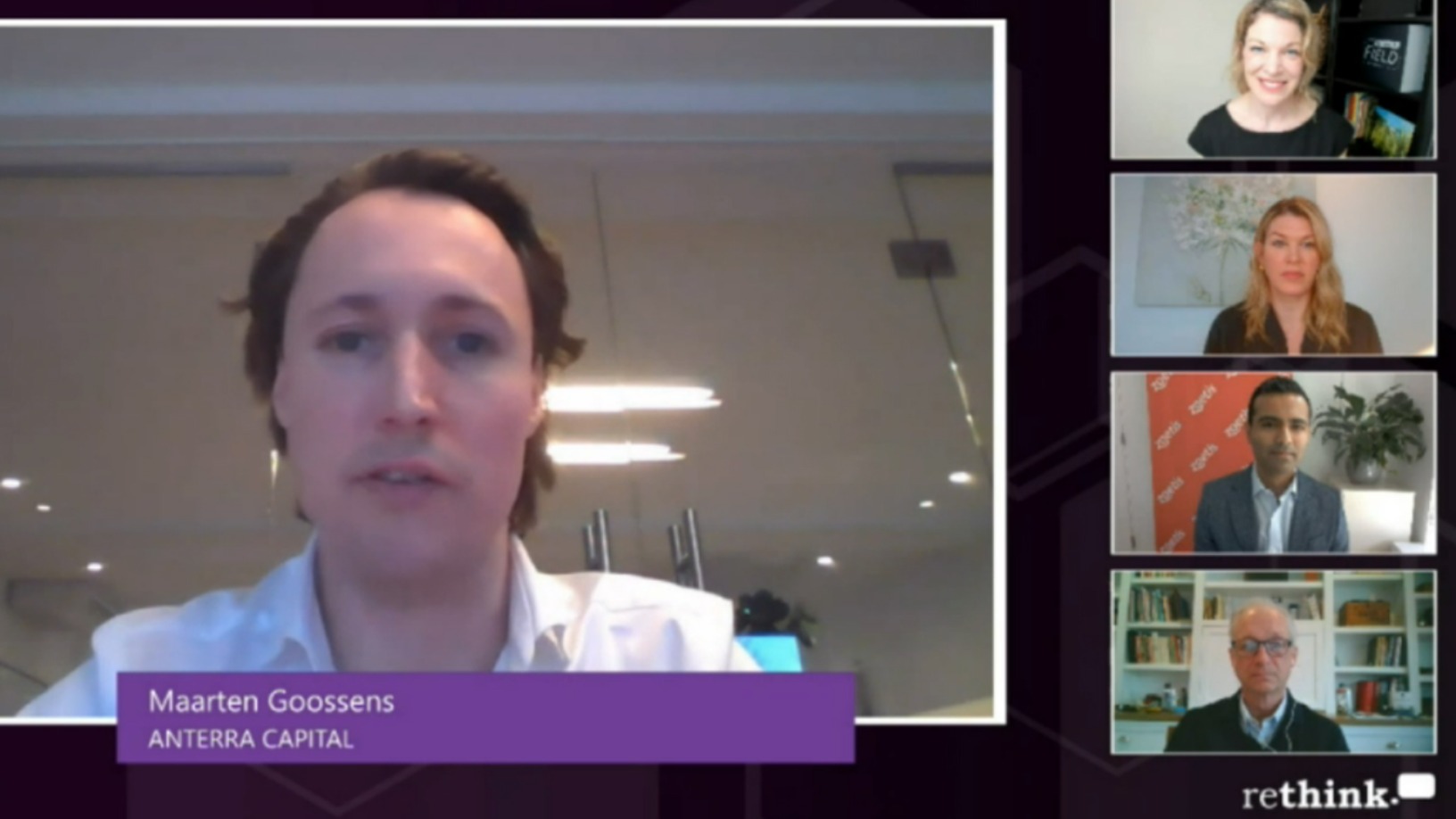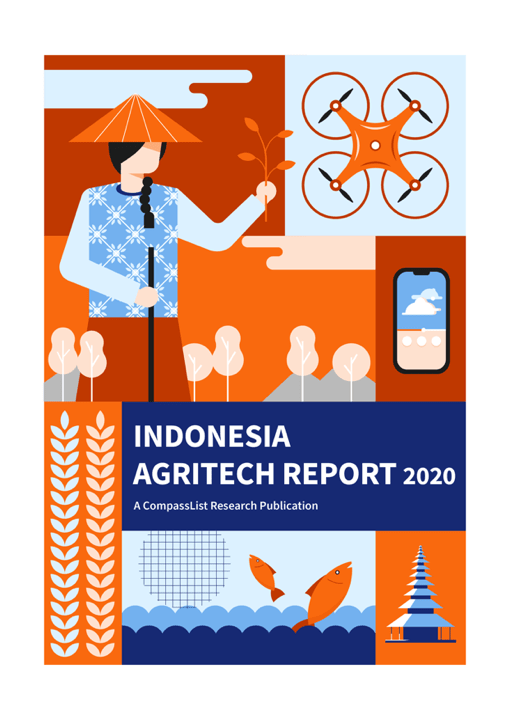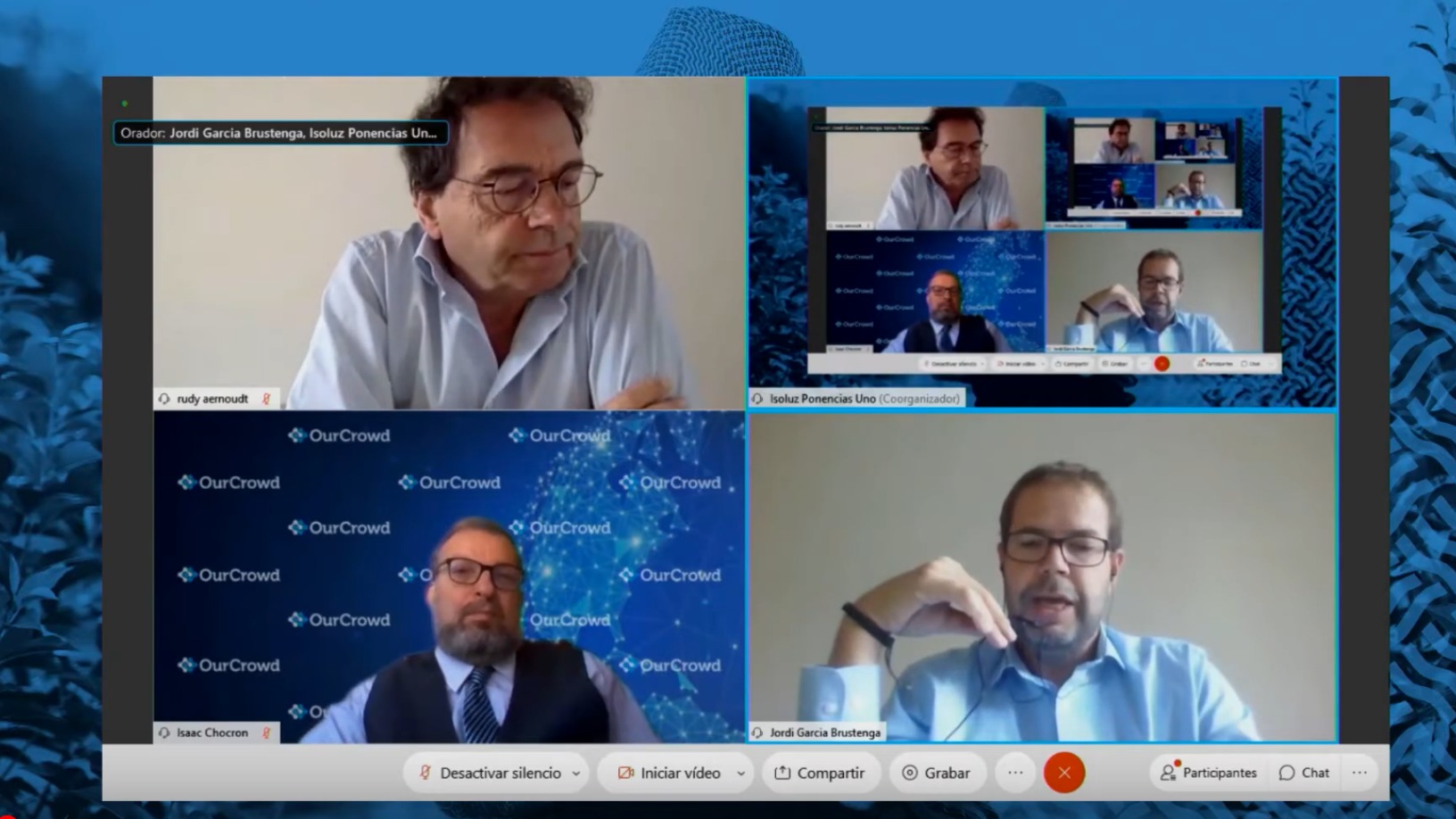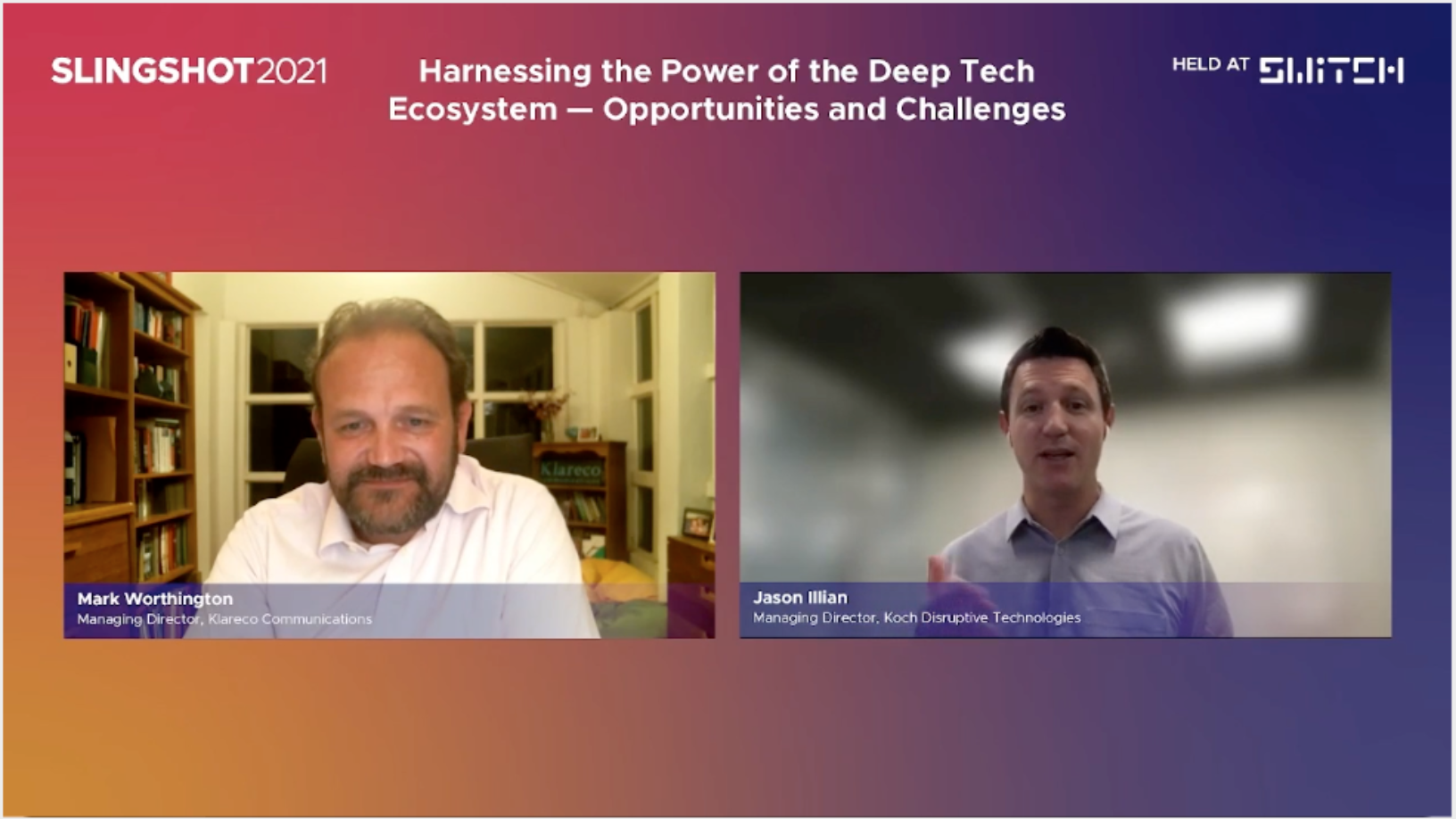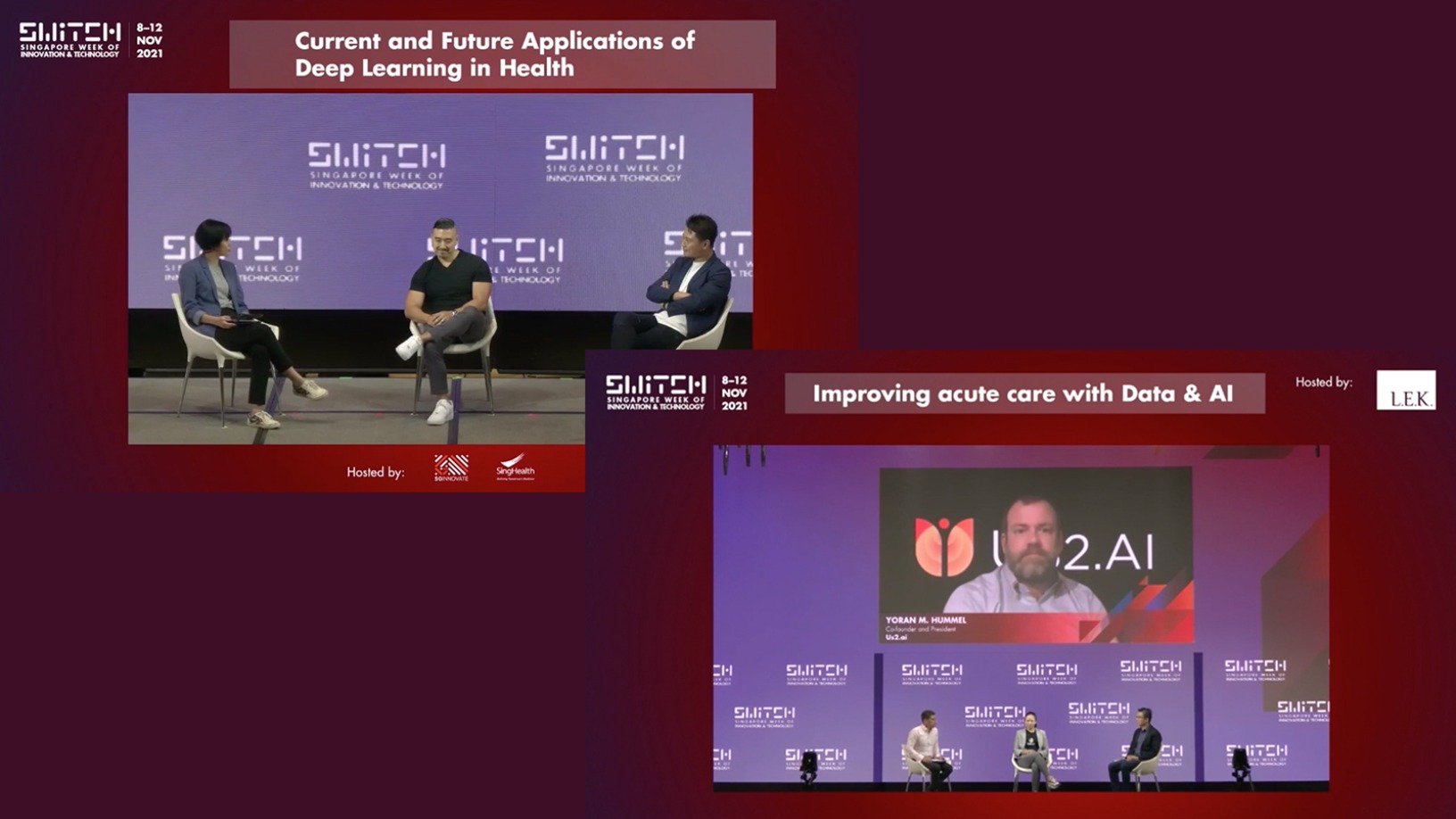On March 8, more than 350 international agtech sector players, animal health and nutrition businesses, producers and investors gathered virtually at the Animal AgTech Innovation Summit, moderated from San Francisco. The response to the pandemic and its possible impacts on agtech, the traditional agricultural sector and consumers was a major discussion point at the conference.
In a panel discussion titled Animal AgTech’s Greatest Priorities for 2021 and Beyond, senior management from key US agtech entities answered questions from Maarten Goossens, the founder of Dutch agtech and foodtech investor Anterra Capital as well as the online audience.
The panel comprised: Karen Hildebrand, Worldwide Tech Leader Agriculture at Amazon Web Services, also a fourth-generation farmer from Canada with a degree in ML; Bruce Stewart-Brown, Senior VP Food Safety, Quality & Live Operations at US meat-producing giant Perdue Foods, and a qualified veterinarian; Abhay Nayak, Executive VP and Head of Accelerated Growth Businesses and Strategy at leading animal health pharma Zoetis; and Erin Fitzgerald, CEO of US Farmers & Ranchers in Action, a farmer-led group advocating for sustainable development, and who has also worked in dairy innovation and sustainability.
Below is an extract from the panel discussion, edited for length and clarity.
Maarten Goossens: Has Covid been a key driver when it comes to improving animal health?
Hildebrand: It certainly provided a lot of opportunity for change. [The question was] how do we enable a remote workforce, especially when we start thinking about genomics pipelines and how that large breeding program can be conducted when scientists aren't shoulder to shoulder. We saw a number of agricultural companies really stepping up and helping to deliver cold-chain transportation in ways that helped to leverage the expertise that existed and transfer that to where it was needed most. So, Covid certainly changed the way that animal health was delivered. But it also provided a lot of opportunity to think about how technology enables us to do things differently.
Nayak: Covid originated in animals and then transferred to humans [like] the vast majority of infectious disease. So the importance of that integrated health message has never been greater. So what we're focused on as an animal health company is to make sure that we have mechanisms and industry collaborations in place to identify the onset of emerging diseases, and then be very quick to react and make sure that we're providing effective solutions. What are the lessons for us as we move forward if we can identify disease early? Can we also develop and accelerate the speed of getting vaccines to the market as quickly as possible?
Covid certainly changed the way that animal health was delivered
Fitzgerald: From March through June [2020], I think this sector should be incredibly proud. I mean, for all practical purposes, we didn't have a health crisis; we did not have a food crisis. But I think what it did show is that we need unbelievable collaboration, as we can imagine, in the next decade, as the sector is increasingly faced with extreme and episodic events. This was the first time that the food sector has been challenged. I think we really saw for the first time that this sector is the backbone of national security.We often talk about food security as national security but I think there's a lot of lessons learned from that perspective on making sure that we're able to move product from farm to consumer.
On the topic of Covid, how can we make the supply chain more resilient?
Stewart-Brown: The question that gets asked after Covid really, honestly, is the question of density; how many animals in one area are too many, and if there are things you can do to improve biosecurity. The other part is the operational kind of confidence, people's confidence to go to work, the amount of labor we have in processing plants throughout the US, as the meat industry is still quite labor-intensive. What does it take to have people feel comfortable enough to come to work? Labor dependability at plants is honestly being rethought, I'm sure, throughout the whole meat industry.
How can digital technology improve animal health and the day-to-day business of a farmer?
Hildebrand: We are excited to see companies say how digital technology is helping to put more data in the hands of producers, be that in dairy, in feed or sheep. But what we're really excited to see is that the focus is how to move that data to the decision-makers, people that are able to take action. So, what that may mean is how do I take IoT technologies to collect data in a way that's insightful and meaningful and then make decisions around it? How quickly does that data need to move to the hands of the producer? Is that decision, a real-time decision that requires ultra-low latency?
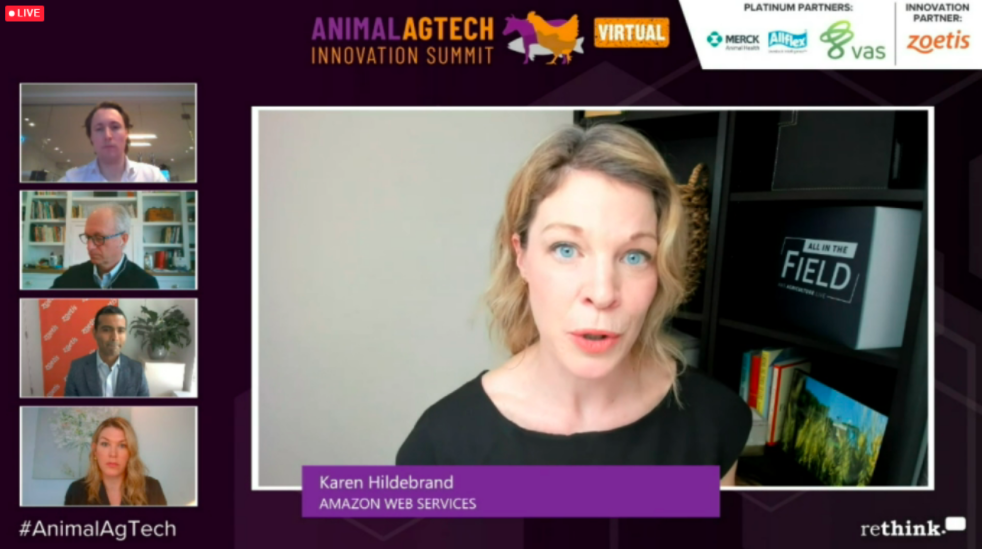
And so it's perfect for an Edge application and machine learning that's happening right on the device? Or is that a decision that's happening at home afterwards or in the office so that data needs to be persisted over time? The trends really tell the story by dashboard, or increasingly, through voice interaction. So really [it is] reducing the barriers to what it takes to understand the data that's being collected and naturally interact with it.
As simple as it might be in terms of asking Alexa what the weather is in the morning, so similarly, what's the number of animals in a given paddock? What's the pasture management movement that I need to do today? Those are the kinds of questions that we see customers building using that kind of underlying digital technology. And we continue to see customers thinking about what they can do with the data as they move into artificial intelligence and machine learning, and really thinking about the action, not just the data that they're able to now see.
Can you tell us how Purdue is integrating new technologies into its business?
Stewart-Brown: There's information in the farm for the farmer, and there's information for us. And sometimes it is the same, and sometimes it’s different. But I'd say the farmer is working on going from things that they might have seen once a week to seeing it once an hour, if they want to. We want more frequent check-ins on the current status of an animal or group of animals. Many of the pieces of information have typically been “alarmed”, let's say, meaning if that element goes past a certain limit you get an alarm. What is more valuable is to see the tendency beforehand as it approaches the alarm, but you have to be good at analyzing trends and reacting to them. And that's a big step in the right direction.
Finally, I come to Abhay and also a question from the audience. Are Performance Livestock Analytics (or PLA, a cattle data analytics tech acquired by Zoetis) driving better health outcomes?
Nayak: We strongly believe that technology can improve health outcomes. Instead of focusing on the treatment after the fact, are there ways for us to predict disease, prevent disease, or at least detect the onset of disease in a more real-time basis? And without technology, you're always going to make decisions a little too late. PLA helps the farmer manage their data in a much more intuitive way, so that they can take action. What we're finding is that the PLA platform is really geared aroundputting analytics in the normal workflow of the customer. And it's helping our customers make decisions on a much more real-time basis. We're also evaluating ways in which we can predict diseases early through our genetics platforms, through our diagnostics franchise, and making sure that there's opportunities and ways to improve the detection of disease. So it's a combined, holistic approach,
Was Covid an excellent stress test for the sector and in what ways are we more resilient than pre-Covid?
Fitzgerald: People were already taking tons of photos of their food. During Covid, we actually saw almost a doubling ofthat as Americans really turned inward and found solitude in their plates. As you look at the Gallup and consumer trust polls, consumers, for the first time, really reaffirmed that they're trusting farmers and ranchers and showed curiosity in how food gets to their plates. That's a tremendous opportunity.
I think, we learned a little bit about what's needed in terms of innovation, as we move to distribution supply chains. We saw technologies being front and center for farmers for resiliency in the long-term. We know we need to help our farmers to prepare to be resilient and that is going to come through the predictability of data and having the ability to look at climate-smart outcomes. To that end, we've launched the Agriculture Climate Partnership to basically do what the healthcare sector did for cancer with the Human Genome Project. We know that the data structures and interoperability of this are massive. And it's going to take a lot of partnerships to help us sketch the interoperability of these data sets together.
How is Amazon dealing with restricted internet availability in the field?
Hildebrand: I know that most of my family's farmland and pasture land in Canada is not covered by any cellular service. So certainly, I think you're hitting on a big barrier that we see across the industry and across the globe. About 90% of what we build at AWS is based on what customers are telling us they need. And certainly in agriculture, connectivity and connectivity strategies are what we hear most often.
What we work through with each customer is what is the area that they're trying to solve because the connectivity solutions in aquaculture, where you're thinking about your deepsea pens, are much different than when you're thinking about an online app or an on-land application.
We saw technologies being front and center for farmers for resiliency in the long-term
There are different ways Amazon and AWS are thinking about this from a Cloud to Edge continuum. There are those machine learning processes or IoT collection mechanisms that can happen entirely out on the Edge. So if you're thinking about in a barn, for example, and you are wanting to monitor or have fully-automated control of your fans, that can all happen out on the Edge and your machine learning inference can happen on the Edge. Full automation doesn't need that Cloud round trip. And we have services that are built to enable that so that you can fully containerize your application and run it out on the Edge.
You don't have to be Cloud-connected all the time. You can update those models with over-the-air updates. There are creative ways to be able to do that. We also see customers who need ultra-low latency, but who want data to go to the Cloud. So, if there is cellular terrific, we can also build in those backup mechanisms. We see customers increasingly using satellite, depending on their location and the size of the data that they're wanting to move. For customers who are using computer vision, they may pre-process out on the Edge.
When we think about the future, we certainly see, with the launch of new low-Earth orbit constellations, that Project Kuiper, which has been announced by Amazon, will certainly bring new capabilities into the agriculture space.
Animal agriculture often shoulders a large part of the blame for climate change. But how can we be the solution? Erin said to me before that this is the year to take action. Why is that? What should we do?
Fitzgerald: This is the year of action on climate change because we believe there is no other sector that can live boots-on-the-ground green reality and go solve climate change other than the food sector. This sector is often mischaracterized for its contribution to climate change. We certainly do have an impact but we are the one sector that canfundamentally enable the transition to a net-zero economy. And we need to lean into that. There's a big difference between black carbon, that's carbon that's been emitted below the surface and brought up, so you have to take more virgin black carbon out of the world, and green carbon, which comes from our sun, and is cycled through this earth and can sequester and store carbon. Our animals are a key part of that. There are wonderful little microbes that those animals do to upcycle and recycle nature as a green recycling machine.
Stewart-Brown: We got to tell the story, but sell it in a way that consumers care about it. If you can tell the story that you're doing and the consumer appreciates it and buys more product from those that they believe, [climate change action] will happen much faster than through any law.
Nayak: Climate change and the agricultural contribution towards positive climate change starts with healthy animals. And that's where our strong belief is. The healthier the animals, the more productive the entire livestock supply chain and the more climate-friendly industry becomes. We really believe in that holistic approach and to leverage technology, a broad toolkit across prevention, detection and treatment to keep animals healthy and productive through their lifecycle.
